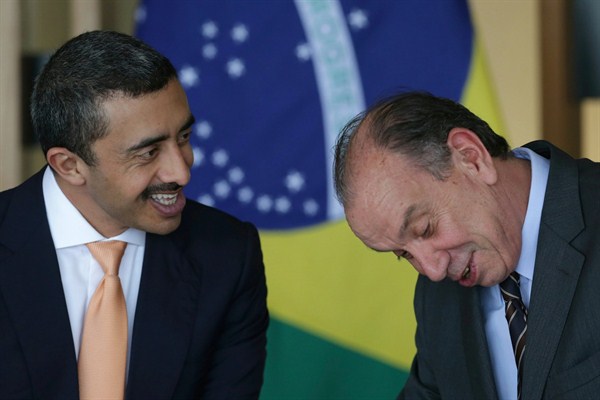On a recent visit to Buenos Aires, Sheikh Abdullah bin Zayed Al Nahyan, foreign affairs minister for the United Arab Emirates, signed several agreements with his Argentinian counterpart, Susana Mabel Malcorra, while talking enthusiastically about the potential for the two countries “to enhance cooperation, explore opportunities and overcome challenges” as they continue to develop their relationship. Yet attempts to deepen ties between Latin American and Gulf countries have long run into geographic, political and cultural obstacles. In an email interview, Michael Shifter, president of the Inter-American Dialogue, discusses the slow process of trying to bring the two regions closer together.
WPR: Historically, what economic links have existed between Gulf and South American countries, and how have these relationships evolved in recent years?
Michael Shifter: Economic links between Gulf and South American countries have historically been extremely limited. The 1970s witnessed a modest change. An oil boom resulted in indirect exposure of Gulf state investors to Latin American markets through their participation in Western development banks. The second oil boom in the mid-2000s spurred increased investment in the region as the financial crisis led to efforts toward greater diversification in emerging markets.

